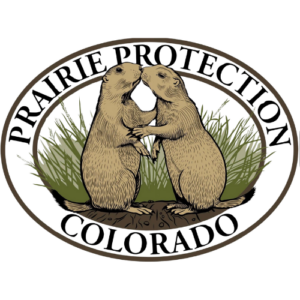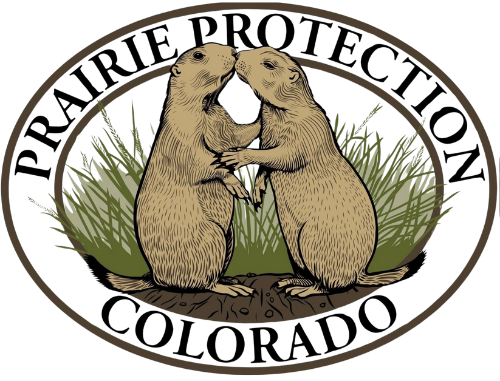Resources
Articles from Prairie Protection Colorado
Articles from Around the Web
Texas Ranchers Used to Hate Prairie Dogs. Now Some Are Fans.
By sunrise on an August morning, the landscaping crew at the Marathon Grasslands Preserve in Brewster County is hard at work. Plump, sandy brown bodies scamper across the gently sloping ground at this 2,700-acre preserve about ten miles northeast of Marathon, pausing where a piece of too-tall grass needs to be chewed down. Dirt flies as a digger cleans out a burrow, her black-tipped tail bouncing as she works. It’s a social bunch that touch noses as they pass one another and keep up a steady chatter of birdlike chirps. Meanwhile, a sentry keeps watch for predators from her perch on top of a mound. She stands alert, her stumpy little T. Rex arms resting on her white belly, and scans the landscape.
The Forest Service Gets a Slap on their Prairie Dog Killing Plan
On the Thunder Basin National Grassland of northeastern Wyoming, the livestock industry has been pursuing an aggressive campaign to expand poisoning and shooting of prairie dogs. And in 2020, the Forest Service gave them a plan amendment that radically expanded prairie dog killing, and eliminated a special designation of a Black-footed Ferret Reintroduction Area to boot. Yesterday, the 10th Circuit Court of Appeals sided with Western Watersheds Project, Rocky Mountain Wild and WildEarth Guardians, and struck down the Forest Plan amendment.
Hunters Should Recognize Predators as Allies, not Competitors
FAQ
Colorado Parks and Wildlife (CPW) annihilates prairie dogs routinely throughout Colorado and on Colorado’s State Parks. Both Cherry Creek and Chatfield State Parks have been poisoning thousands of prairie dogs on a yearly basis through the use of fumitoxin, a horribly inhumane gas where animals bleed out for days during an excruciating death. In addition, CPW is in charge of approving permits for relocating prairie dogs and they deny more than they approve. Their permitting process makes it increasingly difficult to save prairie dogs. In general, agents working for CPW see prairie dogs as an unwanted pest and work towards their annihilation and make preserving this keystone species incredibly challenging. CPW is incredibly hard to work with and they prefer to keep their actions unknown to the public. CPW officials do not care to be accountable to the public
For fumigating burrows, Fumitoxin is the most common poison used. You can read more about poisons used to kill prairie dog colonies HERE.

Prairie Protection Colorado
Prairie Protection Colorado is a registered 501(c)(4) nonprofit corporation.
Prairie Protection is a registered 501 (c)(3) non-profit

